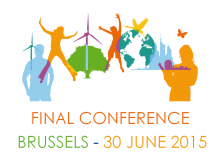This report assesses the effectiveness of typified policy packages that aim at facilitating a substantial transformation of the European energy system, in order to reach a reduction of GHG emissions of 80-95% by 2050 (against 1990 levels). The report first details the medium (by 2030) and long-term (by 2050) key infrastructure requirements and characteristics based on energy system modelling, by both supply and end-use sectors. Subsequently, the report presents three policy packages for delivering this infrastructure, based on three different policy paradigms. Finally, the report presents a number of key bottlenecks that need to be addressed in the near future to be able to meet the CO2 emission reductions in the envisaged timeframe.
Attachment:
Citation:
Funding:
Year of publication:
Number of pages:
Table of contents:
|
|
Executive summary |
6 |
|
1 |
Introduction |
9 |
|
2 |
Low‐Carbon Infrastructure Requirements |
9 |
|
2.1 |
Power Generation Infrastructure |
11 |
|
2.2 |
Industry Sector |
15 |
|
2.3 |
Buildings Sector |
17 |
|
2.4 |
Transport Sector |
20 |
|
2.5 |
Energy and CO2 Transmission and Distribution Networks |
24 |
|
3 |
Three Policy Pathways |
34 |
|
3.1.1 |
Policy Pathways |
34 |
|
3.2 |
Market-Based Policy Pathway |
35 |
|
3.2.1 |
Power Generation Infrastructure |
35 |
|
3.2.2 |
Industry |
43 |
|
3.2.3 |
Buildings |
46 |
|
3.2.4 |
Transport |
56 |
|
3.2.5 |
Summary of the Market-Based Policy Pathway |
68 |
|
3.3 |
Technology-Based Policy Pathway |
70 |
|
3.3.1 |
Power Generation Infrastructure |
70 |
|
3.3.2 |
Industry |
74 |
|
3.3.3 |
Buildings |
76 |
|
3.3.4 |
Transport |
82 |
|
3.3.5 |
Summary of the Technology-Based Policy Pathway |
85 |
|
3.4 |
Behaviour-Based Policy Pathway |
87 |
|
3.4.1 |
Power Generation Infrastructure |
87 |
|
3.4.2 |
Industry |
87 |
|
3.4.3 |
Buildings |
89 |
|
3.4.4 |
Transport |
95 |
|
3.4.5 |
Summary of the Behaviour‐Based Policy Pathway |
97 |
|
3.5 |
Energy and CO2 Transmission & Distribution Networks |
98 |
|
4 |
Discussion and Conclusions |
105 |


